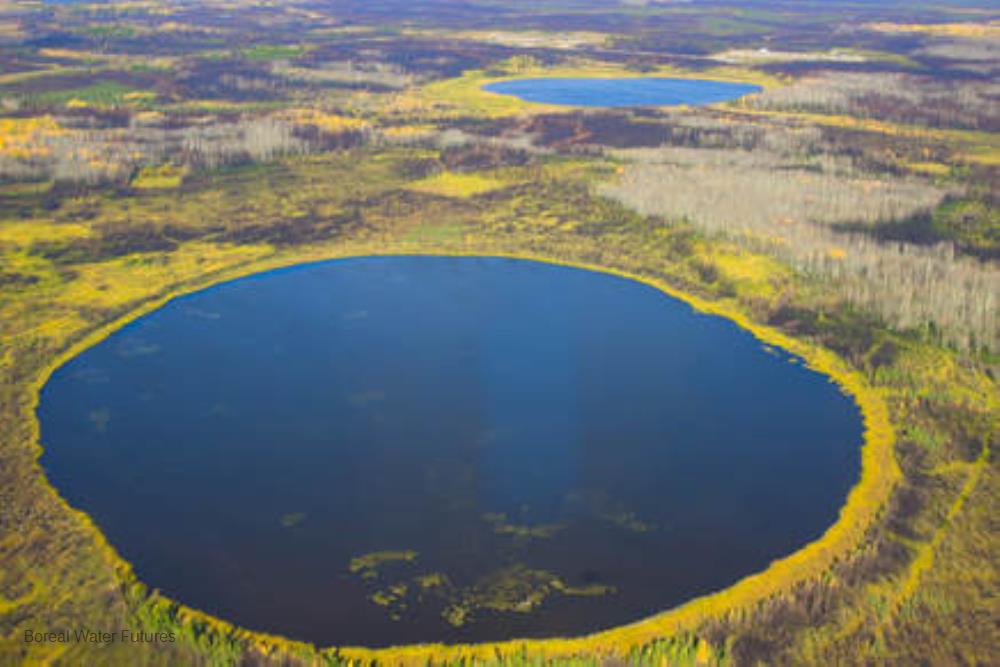
Related items loading ...
Section 1: Publication
Publication Type
Conference Poster
Authorship
Tong Xin, Illman Walter A., Park Young-Jin, Rudolph David L., and Berg Steven J.
Title
Assessment of Groundwater Flow Significance in Hydrologic Models
Year
2022
Publication Outlet
AOSM2022
DOI
ISBN
ISSN
Citation
Xin Tong, Walter A. Illman, Young-Jin Park, David L. Rudolph, and Steven J. Berg (2022). Assessment of Groundwater Flow Significance in Hydrologic Models. Proceedings of the GWF Annual Open Science Meeting, May 16-18, 2022.
Abstract
Groundwater plays a vital role in the hydrologic cycle as it is the largest component of available freshwater. Therefore, diagnosing and predicting hydrologic changes and water futures in Cold Regions will have to account for groundwater. Hydrologic models play an important role in this process. There is a wide spectrum of models of varying complexities available to simulate surface water/groundwater flow and transport. The various users of such models question what level of complexities need to be considered within these different models to achieve project objectives. Currently, there are no clear guidelines or criteria to assist users in selecting appropriate hydrologic models for a specific application. Hydrological models range from lumped parameter models to spatially distributed models to discretize the watershed and represent key hydrologic processes.
The main objective of this project is to examine the significance of shallow/deep groundwater flow in both unsaturated and saturated zones on surface water flow predictions through high-resolution numerical simulations with HydroGeoSphere (HGS) (Aquanty Inc, 2021), a 3D physics-based, fully-integrated hydrologic model. The spatial and temporal variations in surface water and groundwater fluxes including its distributions are investigated using data from the well-instrumented Alder Creek Watershed (ACW) (~79 km2) within the Grand River Basin in southern Ontario. In particular, five integrated hydrologic models with an increasing level of complexity to represent the subsurface using HGS have been developed to highlight the significance of groundwater fluxes on surface water flow through: 1) a (2-D) model incorporating only overland flow data without considering the subsurface; 2) a model with a thin soil layer (1-meter deep); 3) a 7-layer model with a shallow subsurface consisting of heterogeneous and anisotropic hydraulic parameters; 4) a 10-layer model with a deeper subsurface consisting of homogeneous and uniform hydraulic parameters; and 5) a 10-layer model with detailed subsurface information on hydrostratigraphy consisting of heterogeneous and anisotropic hydraulic parameters. In addition, Raven (Craig et al., 2020) an object-oriented hydrological model based on hydrological response units (HRUs) is constructed based on individual modules corresponding to specific hydrological processes. The five HGS models and the Raven model all share the same high-resolution topography information, landcover representation, temporal precipitation records, and evapotranspiration data.
Forward simulation results of a three-year hydrological cycle with the HGS and Raven models are qualitatively and quantitatively compared. Results reveal that models that treat the subsurface more accurately lead to improved predictions of surface water distribution and hydrographs.
Plain Language Summary
The partitioning of precipitation between rainfall and snowfall is a crucial component of the evolution of the snowpack in mountains. Most snowpack models use the air temperature and humidity near the surface to derive the precipitation phase. However, the phase at the surface is strongly influenced by processes such as melting and refreezing of falling hydrometeors that occur above the surface. Atmospheric models simulate these processes and the corresponding phase at the surface. However, snowpack models rarely use this information. In this study, we considered two estimates of precipitation phase from an atmospheric model and tested them with a physically-based snow model over the mountains of southwestern Canada and northwestern United States. The results were compared with traditional approaches using the air temperature and humidity near the surface to derive the precipitation phase. Our results showed that the precipitation phase associated with the snow level obtained from the atmospheric model improved snowfall estimate and snowpack prediction compared to the traditional approaches. In contrast, the cloud/precipitation scheme of the atmospheric model decreased performance in phase estimate and snow simulations due to missing physical processes. Our study highlights that snowpack predictions in the mountains can be improved if valuable information is obtained from atmospheric models.
Section 2: Additional Information
Program Affiliations
Project Affiliations
Submitters
|
Xin Tong | Submitter/Presenter | x23tong@gmail.com | University of Waterloo |
Publication Stage
N/A
Theme
Hydrology and Terrestrial Ecosystems
Presentation Format
poster plus 2-minute lightning talk
Additional Information
AOSM2022 Significance of Groundwater Dynamics Within Hydrologic Models First Author: Xin Tong PhD student (University of Waterloo) Additional Authors: Walter A. Illman1, Young-Jin Park, David L. Rudolph (University of Waterloo), and Steven J. Berg (University of Waterloo; Aquanty Inc.)


 GWFNet
GWFNet Master
Master Data
Data Research
Research Map
Map
 Advanced
Advanced Tools
Tools
 . . .
. . .
 Metadata Editor
Metadata Editor
 Record List
Record List
 Alias List Editor
Alias List Editor
 Legacy sites
Legacy sites